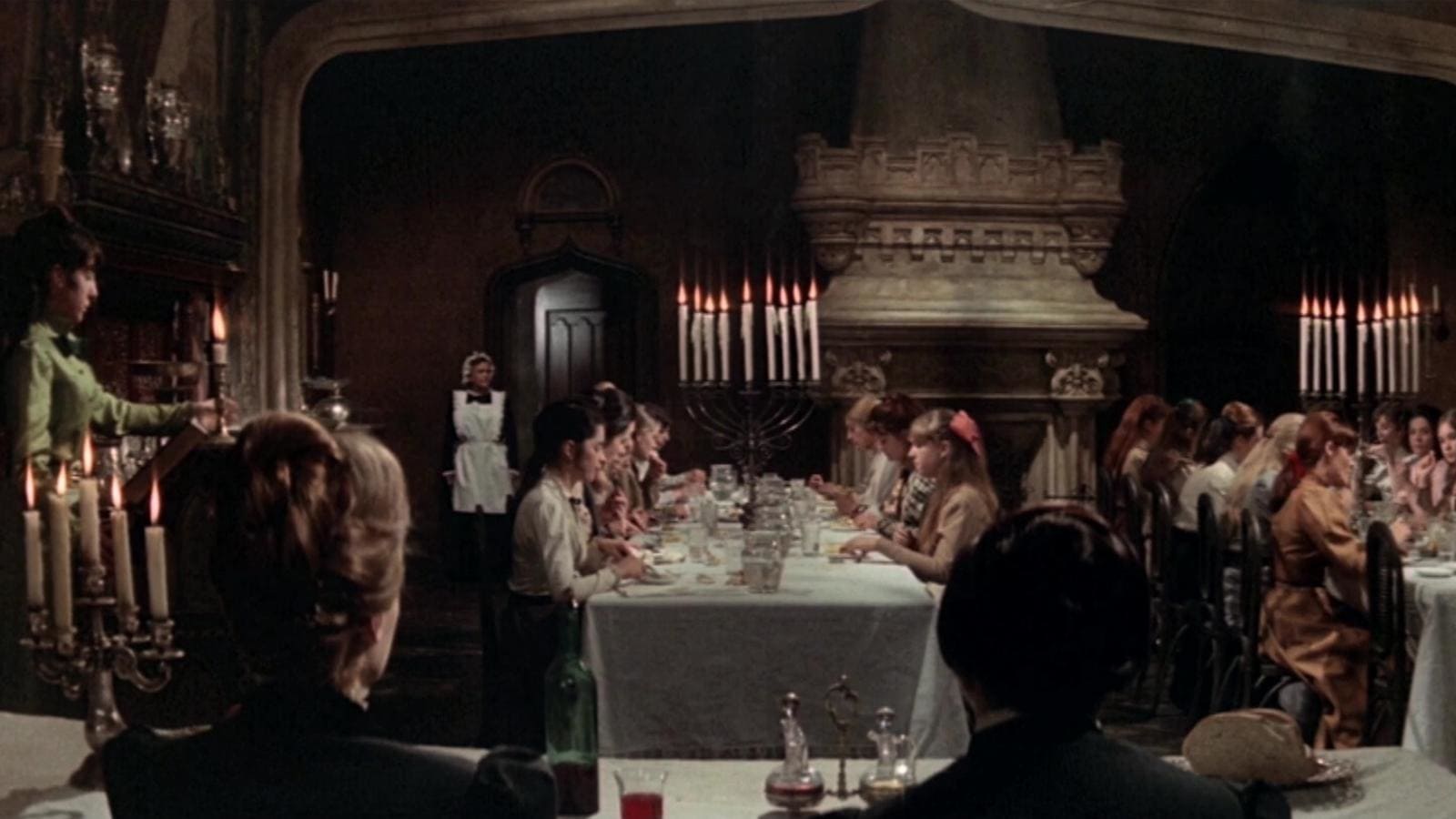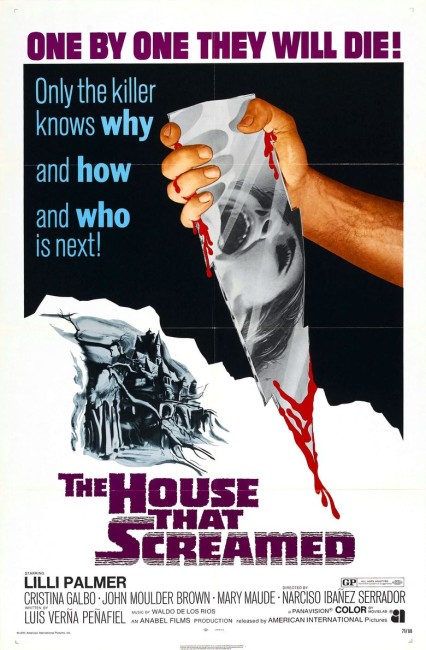(La Residencia)
Crew
Director – Narciso Ibañez Serrador, Screenplay – Luis Peñafiel [Narcisso Ibañez Serrador], Photography – Manuel Berenguer, Music – Waldo de los Rios, Photographic Effects – Estudios Moro S.A., Special Effects – John Beaton, Don Deacon & Wilf Thompson, Art Direction – Ramiro Gomez. Production Company – Anabel Films, S.A.
Cast
Lilli Palmer (Madame Fourneau), Cristina Galbo (Teresa Gravin), John Moulder Brown (Luis Fourneau), Mary Maude (Irene Toupan), Maribel Martin (Isabel), Pauline Challenor (Catalina Izzier), Candida Losada (Sophie Desprez)
Plot
Teresa Gravin is sent to the boarding school run by Madame Fourneau in the French countryside for illegitimate and troubled teenage girls. As Teresa settles in and finds about the secret liaisons the girls engage in, she learns how some of them have been going missing, where it is presumed they have escaped back to their families. However, there is someone lurking around the grounds and killing the girls.
I became acquainted with Spanish director Narciso Ibañez Serrador after watching his fine killer child film Who Could Kill a Child? (1976) also known under several different alternate titles. This had an exceptional quality that immediately made me want to find more of Serrador’s works, which led me to The House That Screamed, his first film as director and unfortunately the only other film that he ever directed. Serrador has however written a number of other genre works, usually under the name Luis Peñafiel, including Spanish tv versions of Rasputin (1958), Ligeia (1959), The Phantom of the Opera (1960), and various films, although none of these have any particularly high profile.
As most European horror films of this era were doing, The House That Screamed has taken influence from the massive popularity of Hammer Films in the late 1950s/1960s and then several European Gothic films that had springboarded off that beginning with Mario Bava’s Black Sunday (1960). A few years after that, Bava created the giallo film with Blood and Black Lace (1964). The House That Screamed reads as an attempt to conduct a giallo film with the sensibilities of the Continental Gothic and Hammer horror film.
What also must be mentioned is how much The House That Screamed must have influenced Dario Argento with Suspiria (1977). Both are films about a series of murders in a girl’s boarding school and in each case the various killings are staged as stylish set-pieces. The only difference is that Argento offers up a nominal occult angle, while The House That Screamed remains a mundane psycho film in its eventual explanation.

Narciso Ibañez Serrador may be one of the most unrecognised of all genre directors. Most of the attention on Spain’s output of horror during this era has been placed on the far less talented Paul Naschy/Jacinto Molina. One only need look at the tour of the school that we get in the opening scenes – which takes us through a big house, dormitories, rooms and conservatories that come with far more of a lushness and depth of detail than you get in more than a dozen of Hammer’s period films put together. Moreover, this tour of the Victorian finery is underpinned by disquieting images – doors shutting behind the group, figures lurking behind the plants of the greenhouse, a hand pressed against the glass of a transom.
The film is structured like the essential giallo – that is to say, set around a series of killings – but Narciso Ibañez Serrador delivers each of these with incredible style. There is the slow-motion stabbing of Maribel Martin, where each detail almost seems shown for our perusal; the fantastic scene where John Moulder Brown sneaks in through the vent to peep on the girls in the shower – where the teasing eroticism of them showering while wearing underclothes is contrasted with his increasing desperation to get out after the janitor closes the grille; one girl’s covert rendezvous with the delivery man in the shed where the tease of them making out is intercut with the surprisingly menacingly edited frenzy and sounds of the girls in needlepoint class.
There is [PLOT SPOILERS] the scene where Cristina Galbo goes to escape from the school only to abruptly get her throat slit from behind, which is made all the more shocking for the fact that she has been built up as the sympathetic point-of-view character throughout the rest of the film and it considerably throws expectations sideways to have her killed off twenty minutes before the end. The film also arrives at an effective twist revelation of the identity of the killer, even if it is one that draws somewhat from Psycho (1960).
Trailer here

